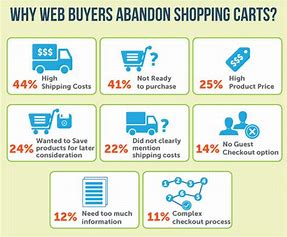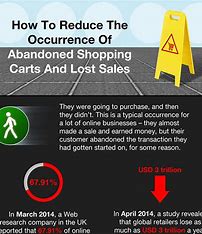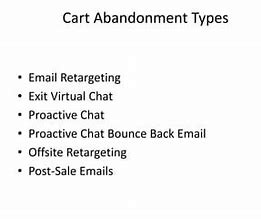Cart abandonment is that moment when a potential customer decides to leave a website after adding items to their cart without completing the purchase. In the bustling world of affiliate sales, this is a huge issue. And why does it matter? Well, these abandoned carts represent untapped revenue—a lot of it. When folks leave without buying, it’s like shutting the door on a fresh opportunity.

Picture this: you’re a digital cashier, and every time someone fills up their cart and walks out, it’s a missed chance. For affiliates relying on commissions, those nearly completed sales can mean the difference between hitting and missing your monthly targets. It’s not just about the lost sales, it’s about the ripple effect it has on your business relationships and overall income.
click here to start your own online business for free Ced0224
Statistics give us a clear picture. On average, cart abandonment rates hover around 70%. That’s a big chunk of potential sales left on the table. Over time, these numbers add up, shrinking your bottom line in a way that’s hard to ignore. Addressing cart abandonment isn’t just a smart move; it’s a necessary one to keep the business thriving.
This article’s going to lay down some solid tips, tricks, and strategies to keep those carts rolling right over the checkout line. Let’s uncover what’s really happening and how to keep your potential buyers hooked until they hit ‘confirm purchase’.
Understanding the Customer Journey: Reasons Behind Cart Abandonment
Cart abandonment is often the result of a tangled web of reasons, each one whispering a quiet ‘not today’ to potential buyers. One major culprit? Surprise costs. Imagine this, a customer thinks they’ve found a great deal until, whoops, surprise shipping charges or unexpected fees pop up like an unpleasant jack-in-the-box. Those hidden elements can feel like a bait-and-switch, sending shoppers running for the exit.

Then there’s the checkout process itself. Picture a line at your favorite coffee shop that’s moving at a snail’s pace, and the barista is on their third break. Frustrating, right? A complicated or lengthy checkout process can trigger the same feelings for online customers—a few extra steps or forms, and off they go, headed somewhere else with more efficient service.
Trust issues play a huge role too. Shoppers are picky about where they hand over their hard-earned cash. If a site feels sketchy or lacks key elements like trust badges or clear policies, it’s like inviting them into a store with no windows. That unease? It makes them reconsider their choices and abandon ship.
Plop yourself in a shopper’s shoes, and the shopping journey suddenly reveals a map with multiple stopping points. Each stage from browsing to purchase can pose its own challenge. Having a keen awareness of these pain points can be game-changing for any affiliate marketer trying to keep those carts on track.
Optimizing Checkout Processes: Simplifying the Path to Purchase
The checkout process can be a wild ride for customers—a place where speed bumps often lurk. What’s the first step towards an easier journey? Simplifying the path with a sleek checkout system is crucial for anyone serious about their bottom line.
Nobody wants to navigate an obstacle course just to buy a pair of shoes, right? Streamline the process down to the essentials. Some marketers swear by a one-page checkout, giving buyers all the info they need at a glance. For those with multi-step processes, ensure each step feels intuitive and necessary–no fluff.

Never underestimate the power of convenience. Offering a guest checkout option can significantly ease the journey. Many users jump ship when forced to create an account, so offering a no-strings-attached option keeps them on board.
Don’t leave mobile users stranded in no-man’s land. Ensure the checkout process is just as smooth on a smartphone as it is on a desktop. Mobile-optimized experiences keep things frictionless, preventing unnecessary hiccups.
Dive into quick pay features. Remember the first time you tapped your card and it just worked? Bringing this efficiency online with features like auto-fill for payment information or digital wallet options can be a game-changer. ”
Building Trust and Credibility: Turning Visitors into Loyal Customers
Trust is the unseen currency in the world of online sales. When customers feel like they’re in safe hands, they’re more likely to hit that ‘buy now’ button with confidence. But how do you build that trust? It starts with secure payment gateways and trust badges—those little logos are like a comforting handshake, assuring folks that their details are safe.
Shoppers love to see happy faces. Showcave customer reviews, testimonials, and ratings. It’s like having a friend vouch for you, making new shoppers feel more at ease about their spending decisions. And the bonus? Honest feedback can highlight areas for improvement and elevate your service.
Transparency isn’t just a buzzword; it’s a promise. Clear and visible return or refund policies can put edgy minds at ease. Knowing there’s an exit route if things don’t work out makes customers more likely to take the plunge in the first place.
Align yourself with the big players. Highlight affiliations with reputable brands, or showcase any industry certifications. This not just enhances your credibility but also sets you up as a real player in the field. In the end, it’s all about creating an environment where customers feel valued and secure. That’s the secret sauce to keeping carts full and conversion rates up.
Leveraging Technology: Tools and Platforms to Reduce Cart Abandonment
In the digital age, technology is like your best sidekick, ready to combat cart abandonment at every turn. Picture using recovery tools and email campaigns as your go-to strategy. When someone forgets about their cart, a timely email reminder can nudge them back, sparking the curiosity that led them to click ‘add to cart’ in the first place.
Think Artificial Intelligence is just for sci-fi movies? Not exactly. AI and machine learning tools can predict customer behavior, understanding when someone might bounce before it happens. These tech wonders analyze patterns and suggest proactive measures, keeping potential losses in check.
Integrate your shopping cart with analytics tools. Combining forces like this offers a detailed picture of user behavior, giving you the insights needed to refine strategies. It’s like watching a playback of the game to improve your next performance.
How about some real-world inspiration? Successful tech implementations have shown that the right tools can slash abandonment rates significantly. Examining case studies and metrics gives a clearer idea of what works in practice, serving as a roadmap for your tech journey.
When leveraged correctly, technology transforms from a distant concept into an essential ally in the fight against cart abandonment. By integrating these systems thoughtfully, you’ll be harnessing modern innovations to boost conversions and client satisfaction.
Personalizing the User Experience: Tailored Marketing Strategies
Imagine walking into a store and having the sales assistant know exactly what you want before you even ask. That’s the magic of personalization, and it’s a game changer online too. Personalized marketing strategies start with tailoring offers and incentives to each user, making them feel like they’re getting a custom shopping experience.
Targeted email marketing? It’s like whispering in someone’s ear about the things you know they’ll love. By sending emails that cater to each buyer’s past behaviors or preferences, you’re creating a pipeline that draws them back in for that purchase they were considering.

Retargeting ads work wonders too. Ever noticed those ads following you around the internet, reminding you of the shoes you almost bought? They’re not just stalking you—they’re a clever tactic designed to keep you engaged and more likely to click the checkout button.
Don’t stop at ads; incorporate personalized product recommendations right on your site. Customers appreciate when the navigation works like a personal shopper, suggesting exactly what might go well with what they’re looking at or have bought before.
All these strategies tap into basic psychological principles of persuasion: familiarity, reciprocity, and affinity. By making visitors feel understood and valued, you’re not just making sales—you’re creating a sense of belonging that keeps them coming back.
Analyzing and Adapting: Continuous Improvement to Mitigate Cart Abandonment
Tracking cart abandonment rates and key performance indicators (KPIs) is like keeping an eye on your business pulse. These metrics tell you what’s working and what could use a bit of tweaking. Regularly reviewing them helps spot trends, offering insights on where the leaks might be in your sales process.
A/B testing serves as a key tool here. It’s a method where you test different elements—be it a new layout, button color, or wording—and observe which version resonates better with customers. Little changes can lead to big transformations in conversion rates when properly tested.
Customer feedback isn’t just chatter; it’s golden. By tapping into what your audience is saying, you can refine processes to better meet their needs. If they tell you a certain part of the journey is a hassle, addressing that could see abandonment rates plummet.
Staying adaptive is crucial since consumer behaviors and technological advances are always shifting. Whether it’s integrating new payment methods, offering faster checkout processes, or simply refreshing site aesthetics, being receptive to change can reap big rewards.

Commit to a regular cycle of assessment and adaptation. This iterative approach ensures you’re always a step ahead, preventing issues before they become entrenched problems and maximizing the chances that those carts get to the finish line.
